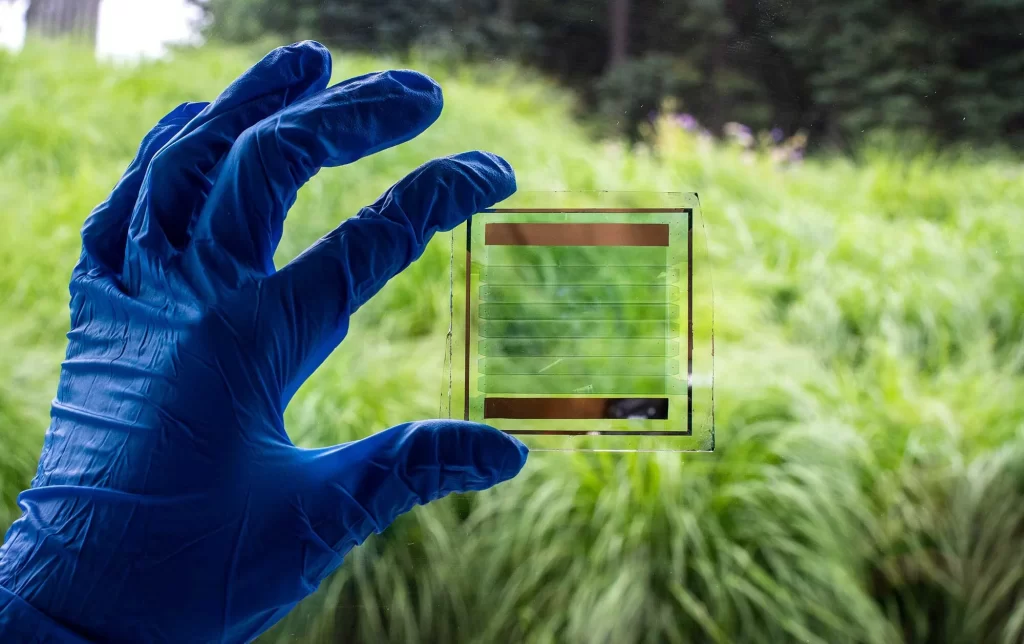In the quest for sustainable and renewable energy sources, innovation is key. Among the myriad advancements in clean technology, transparent solar panels are emerging as a groundbreaking solution with enormous potential to revolutionize how we harness solar energy. These cutting-edge devices promise to transform everyday surfaces into power-generating entities, offering a glimpse into a future where buildings and gadgets not only consume but also produce energy.
The Technology Behind Transparent Solar Panels
Transparent solar panels function by capturing light through glass surfaces. Unlike traditional opaque solar cells that absorb visible sunlight, these advanced panels focus on converting ultraviolet (UV) and infrared light into electrical power while allowing visible light to pass through. This unique characteristic makes them appear almost entirely transparent, seamlessly integrating into windows and other glass structures without obstructing the view.
The development of transparent solar panels involves the use of organic molecules designed to absorb specific wavelengths of sunlight. These molecules act as concentrators, directing the captured UV and infrared light towards traditional photovoltaic cells located at the edges of the panel. By efficiently converting non-visible light spectra into electricity, this technology achieves high levels of transparency and functionality.

Achieving Full Transparency
One of the most remarkable aspects of transparent solar panels is their ability to achieve what researchers call "100% transparency." While this term might be slightly misleading—since achieving absolute invisibility is theoretically impossible—it does indicate that these panels can be integrated into surfaces without noticeable visual disruption. This advancement promises immense potential in terms of sustainability, enabling us to harness solar power without compromising aesthetics or functionality.
Vast Applications in Modern Society
The benefits of transparent solar panels extend far beyond their technical prowess. Their integration into various facets of modern society holds immense promise for urban environments, net-zero energy buildings, and broader climate goals.
Urban Areas
In densely populated urban areas where space is at a premium, finding locations for traditional solar installations can be challenging. Transparent solar panels provide an elegant solution by transforming existing windows and glass structures into power-generating assets. Skyscrapers adorned with these innovative panels could effectively become vertical solar farms, significantly contributing to urban energy needs without requiring additional land or altering cityscapes.
Net-Zero Energy Buildings
As nations strive towards reducing carbon footprints and achieving net-zero energy targets, building design plays a critical role. Transparent solar panels offer architects and engineers a versatile tool to create self-sustaining buildings that generate more energy than they consume over their lifetimes. By incorporating these panels into windows, facades, and even skylights, buildings can tap into an abundant source of renewable energy while maintaining aesthetic appeal.
Climate Goals
The transition from fossil fuels to renewable energy sources is pivotal in combating climate change. Transparent solar panel technology aligns perfectly with global climate goals by providing an efficient means of generating clean electricity from previously untapped surfaces. As more structures adopt this technology, reliance on non-renewable resources diminishes, leading to reduced greenhouse gas emissions and a more sustainable future.
Pioneering Research at Michigan State University
At the forefront of this technological revolution is a group of researchers from Michigan State University (MSU). Their pioneering work has led to the creation of transparent luminescent solar concentrators capable of transforming see-through surfaces—such as windows on buildings or cell phones—into effective solar-collecting platforms.
The MSU team has developed organic molecules specifically engineered to capture UV and near-infrared wavelengths while remaining highly transparent in the visible spectrum. These molecules are embedded within plastic-like materials that can be affixed onto glass panes without compromising clarity or visibility.
This research underscores the transformative potential of transparent solar panel technology across various applications—from residential homes with smart windows that generate electricity during daylight hours to mobile devices equipped with screens doubling as miniature power plants.
Conclusion
Transparent solar panel technology represents a monumental leap forward in our journey towards sustainable living powered by clean energy solutions. By harnessing light through glass surfaces while maintaining full transparency, these innovative panels offer unparalleled opportunities for integrating renewable power generation seamlessly into our daily lives—from bustling cities filled with towering skyscrapers capturing sunlight through every window-pane surface imaginable down-to-earth residential homes boasting sleek smart-windows producing their electricity throughout daylight hours alike! Moreover—as demonstrated by pioneering research conducted tirelessly day-in-day-out right here within laboratories housed within institutions such-as-Michigan-State-University alike—it becomes increasingly evident just how integral a role cutting-edge tech-like-transparent-solar-panels will play when it comes to addressing issues surrounding-global-climate-goals-and-beyond!

